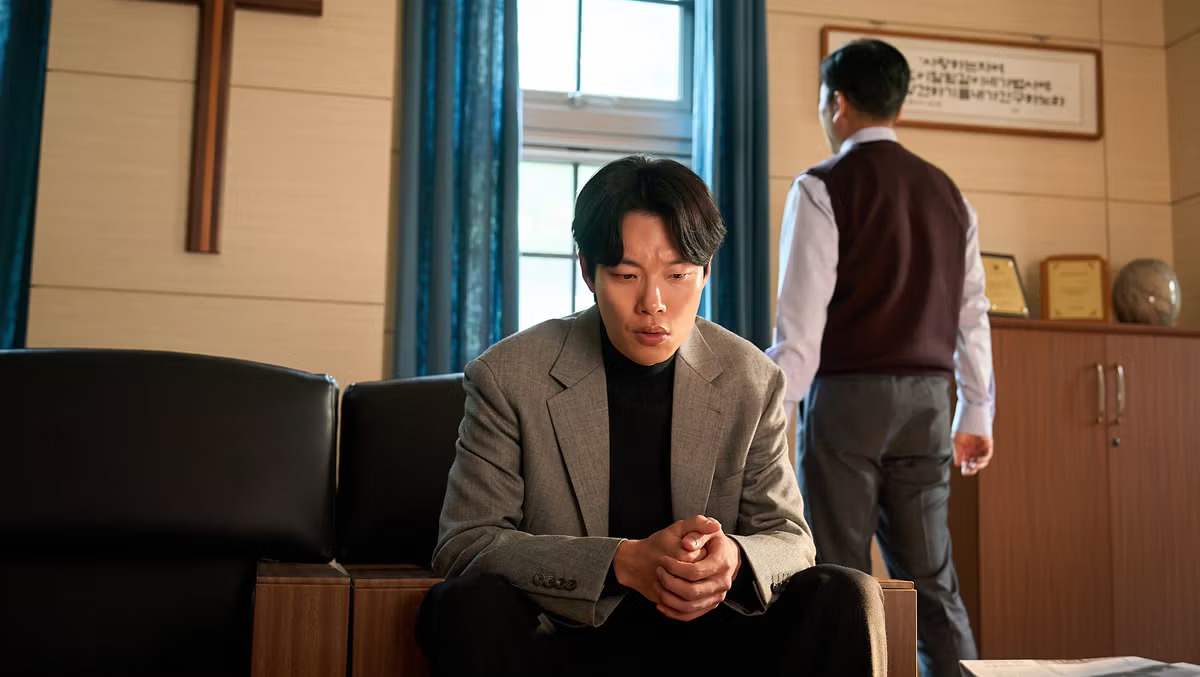Netflix’s latest addition, Revelations, directed by Train to Busan’s Yeon Sang-ho, delves into the complexities of morality and crime. The film intertwines the lives of three key characters—a zealous pastor, a haunted detective, and a misunderstood criminal—against the backdrop of a missing child case. As the mystery unfolds, these characters become entangled in a web of secrets, violence, and redemption, with the ultimate question being: what happened to A-yeong?
The film’s central mystery revolves around A-yeong, a 12-year-old girl who vanishes after attending church. Suspicion quickly falls on Yang-rae, a known criminal seen following her. As the story progresses, it is revealed that A-yeong is being held in a house set for demolition. Just in time, Detective Yeon-hee rescues her, bringing closure to the case. However, A-yeong serves more as a symbol than an active protagonist—her disappearance acts as a catalyst that forces the other characters to confront their pasts.
Faith, Vengeance, and Redemption: The Fragile Line Between Justice and Delusion
Pastor Min-chan’s involvement with Yang-rae begins as an act of charity but quickly spirals into paranoia and vengeance. When Min-chan mistakenly believes his son has been kidnapped, he suspects Yang-rae and chases him into the woods. In a moment of perceived divine revelation, Min-chan pushes Yang-rae off a cliff, believing he is fulfilling God’s will. This act of violence highlights the dangers of blind faith and the human tendency to find justification in supernatural signs.

Detective Yeon-hee’s journey is deeply personal, as her sister was once a victim of Yang-rae’s brutality. Haunted by her sister’s ghost, she grapples with guilt and unresolved trauma. Her pursuit of A-yeong’s case becomes a means of redemption—by saving A-yeong, she symbolically saves the sister she lost. This journey ultimately leads her to realize that trauma and crime are deeply intertwined, shaping both victims and perpetrators.
Initially portrayed as a ruthless villain, Yang-rae’s backstory reveals a tragic childhood filled with abuse. His violent tendencies stem from years of suffering at the hands of his father while his mother remained a passive observer. The film presents a moral dilemma: should Yang-rae be seen solely as a criminal, or does his past warrant sympathy? While his actions are undoubtedly horrific, Revelations challenges the notion of absolute evil.
The One-Eyed Monster: A Symbol of Trauma, Perception, and Moral Ambiguity
A recurring motif in Revelations is the “One-Eyed Monster,” a disturbing figure in Yang-rae’s artwork. Initially dismissed as madness, it is later revealed to symbolize the single-windowed room where Yang-rae suffered abuse. This metaphorical monster represents the cycle of trauma and how unresolved pain can manifest in destructive ways, ultimately shaping a person’s actions and perceptions of the world.
Min-chan’s actions are later diagnosed as apophenia—the tendency to see patterns and meaning where none exist. His belief that he was receiving divine signs led him to commit acts of violence under the guise of righteousness. However, the film leaves room for interpretation: was Min-chan genuinely delusional, or was apophenia merely an excuse for his inner rage, fueled by personal betrayals and frustrations?
At its core, Revelations is more than a crime thriller; it is a meditation on human nature, trauma, and the blurred line between good and evil. The film forces audiences to reconsider their perceptions of justice and morality. Through its complex characters and gripping narrative, Revelations dismantle the notion of absolute villainy, instead portraying a world where every sin has a story and every crime has a cause.



